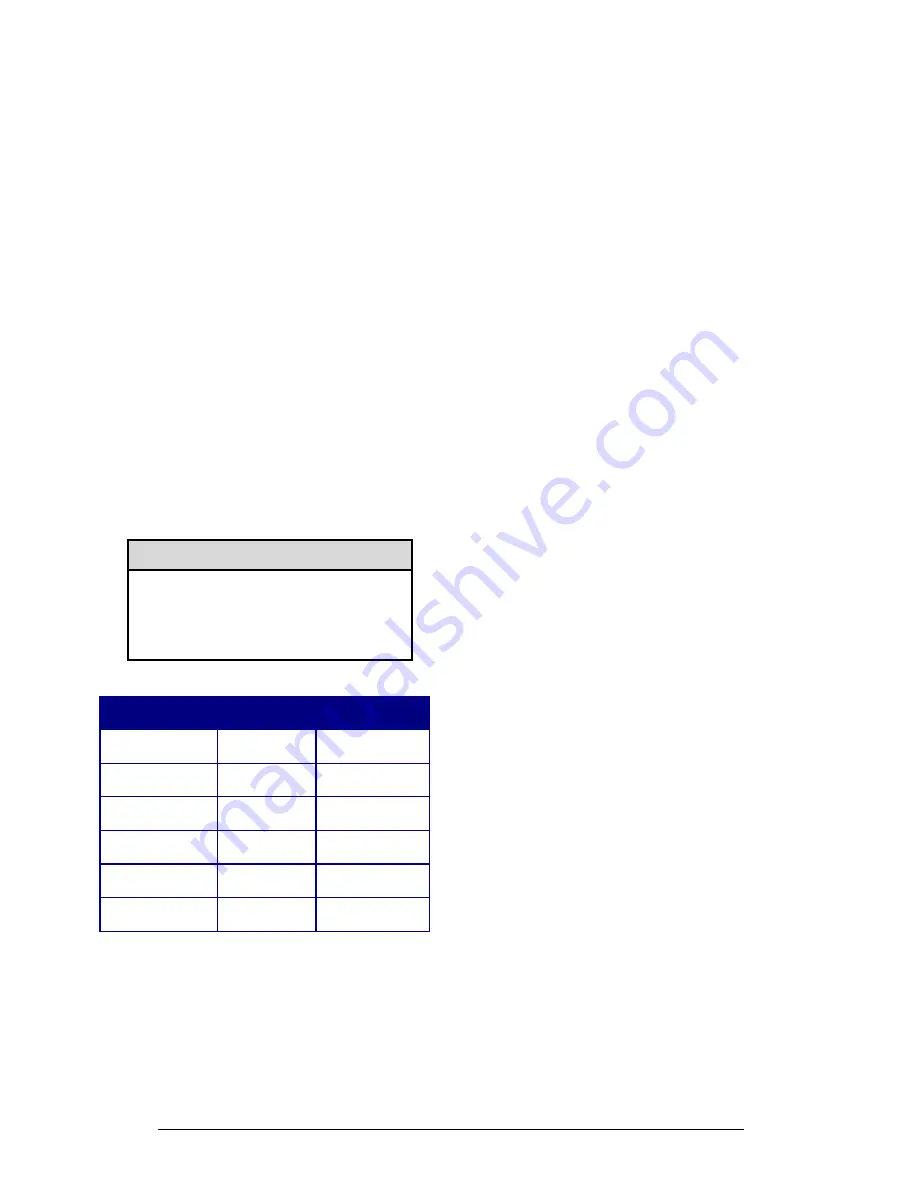
22
good abrasion resistance. For ground runs we
recommend THHN wire buried inside plastic con-
duit rated for electrical service. A suitable water-
tight junction box should be installed at the base
of the tower to enclose the wire connections be-
tween the tower and underground wiring.
In some cases it will be possible to provide direct
point-to-point wiring between the XL.1 wind tur-
bine and the PowerCenter. For this purpose we
recommend 2-conductor VNTC (Vinyl Nylon Tray
Cable), which is suitable for outdoor and direct-
burial applications. For rocky soils, or runs un-
derneath roadways, we recommend that the un-
derground wire run be installed in conduit. If a
wiring junction is made at the base of the tower
then a watertight junction box should be installed
for the connections.
The recommended wire sizes for the 24 VDC XL.1
wind turbine are shown in Table 3. The listed dis-
tances include the height of the tower.
Maximum Current:
60 amps
Caution
Installing wire sizes larger than those
recommended will increase the maxi-
mum current produced by the turbine.
Distance
Size (U.S.)
Size (metric)
23 m (75 ft)
#8 AWG
3.35 mm
2
46 m (150 ft)
#6 AWG
4.25 mm
2
69 m (225 ft)
#4 AWG
5 mm
2
91 m (300 ft)
#4 AWG
5 mm
2
114 m (375 ft)
#2 AWG
7.1 mm
2
130 m (450 ft)
#2 AWG
7.1 mm
2
Table 3: Recommended Wire Sizes for the XL.1
Note: These wire sizes have been engineered to provide op-
timum rotor loading for the BWC XL.1/24 wind turbine. Devia-
tion from these recommendations can result in decreased
performance from your machine and / or unnecessary addi-
tional wire-run costs. The use of a wire gage one size larger
than the recommended size is acceptable and is recom-
mended if aluminum wire is used.
Before assembling the wind turbine the tower wir-
ing must be in place, though not necessarily
permanently affixed. We recommend that you
leave at least 30 cm (12 in) of free wire at the top
of the tower for making the electrical connections
to the wind turbine.
E. Other System Components
A complete remote power system will include
other electrical components such as a solar array
(optional), a battery bank (required), a dump load
(optional), and an inverter (optional). These com-
ponents are sometimes called the “balance of sys-
tem” or BOS equipment.
The wind turbine and the other BOS equipment
are electrically connected in a “DC-bus” architec-
ture, as shown in Figure 6. The DC-bus architec-
ture is robust and very flexible, allowing endless
options for multiple and differing components.
The unifying feature is that all of these compo-
nents are electrically connected to the positive (+)
and negative (-) DC bus, so they all experience
the same DC voltage. The DC voltage of the sys-
tem is largely determined by the state of charge of
the battery bank and to a lesser, but still signifi-
cant, extent by the charging or discharging rates
(the rate at which DC current, or amps, is being
created or consumed).
Charging components, such as wind turbines, so-
lar arrays, and inverter/chargers (powered by a
back-up generator or the power grid), can be
added to a DC-bus system with separate charge
regulators and these regulators can operate com-
pletely autonomously (e.g., they do not need to
communicate with each other or be coordinated
using a central system controller). The separate
charge regulators, whether there is just one or if
there are a dozen, will respond to the DC-bus
voltage and control their generators charging cur-
rent.
When putting together or adding to a DC-bus re-
mote power system there are a few pitfalls to
avoid if possible:
•
Battery banks that are too small, so that
battery voltage swings too much with
high charging or discharging currents.
•
Multiple charge regulators set to the
same voltage, so that there is one big
Summary of Contents for 24 VDC B
Page 19: ...18 Appendices ...
















